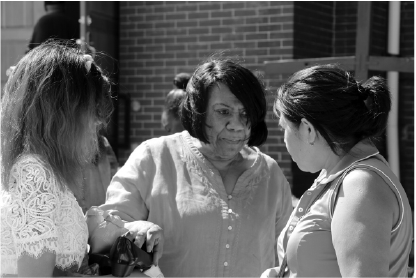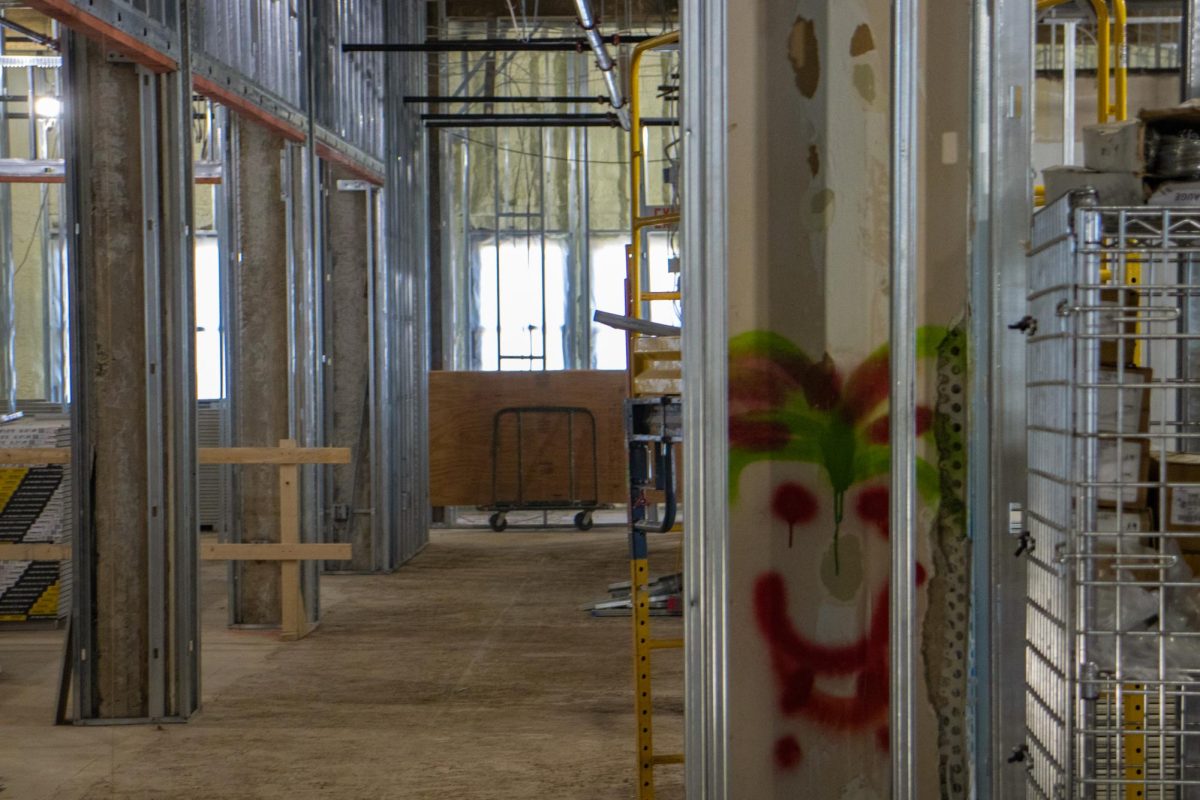Two Churches, One Love: Bridging the Divine

April 26, 2016
Gospel music echoes from a street stage. Smells of barbecue waft through the air. People raise their hands in praise, dance and cheer in response. On a hot Saturday in September, a community celebrates at the H Street Festival in the District of Columbia.
On Sunday, that community divides.
African American Methodists attend morning services at Douglas Memorial Methodist Church. In the evening, The Table Church, a predominantly white congregation, gathers for worship in the same building.
Looks can be deceiving, though.
The Rev. Helen Fleming and Pastor Kevin Lum describe themselves as “two churches with one mission.” At the intersection of 11th and H Street, they formed a community partnership that works to bridge racial and cultural differences.
A Changing Neighborhood
In 2013, Fleming and Lum formed the Douglas Worship Center, an umbrella organization for the various ministries in the Douglas Memorial Church building. The story of their partnership can only be described as fortuitous.
Fleming, an African American minister associated with the Baltimore-Washington Methodist Conference, inherited a dying church. When she took over Douglas Memorial in 2005, the building was deteriorating and only 19 people belonged to the church, she explained.
It was also when she began to see changes in the H Street area.
“There were very few blacks left,” Fleming observed. “Gentrification had entered Washington, DC.”
United States Census Bureau data for 2000 indicates that African Americans made up about 92 percent of the H Street population and whites around four percent. By 2010, the white population increased more than sevenfold to about 30 percent.
“That’s why I had to go find a Caucasian pastor,” Fleming said.
Enter Kevin Lum, a young, white professional.
He and his wife, Charla, had been searching for a place to “plant” a church “that calls people to both Jesus and justice,” explained Lum. They felt called to H Street, where Lum saw the two Districts – young professionals and long-time residents – come together.
“H Street seemed to be one of the spaces where those two cities really met,” Lum said. “And part of what we believe to be the church is to look like and to reflect the Kingdom of God. And that’s to reflect the full range of diversity.”
“They See us Working as a Team”
Lum said he did his best to honor the years of ministry Fleming and other African American spiritual leaders had done in the neighborhood.
Angela Kissel, director of community engagement for The Table Church, said that there was an emphasis on recognizing the changes the church would bring to the area.
“We didn’t want to walk in and be that young hippie church,” she said. “We wanted to learn from the community,”
That is exactly what happened. The Table Church partnered with Douglas Memorial’s on-going community projects, such as the neighborhood food pantry. Two Saturdays a month members of The Table and Douglas Memorial work together to run the pantry out of the building at 11th and H.
In the first six months of 2015, the pantry served 1,100 families, according to Lum.
“They see us working as a team in the neighborhood,” Fleming said.
Joint efforts such as the food pantry made it easier for The Table congregation to become part of the community.
“The partnership with Douglas gave us respect and credibility in the neighborhood,” Lum said.
“Beginning with relationships”
Although a lot has changed on H Street, some things have remained the same.
“Being realistic, people still like to be among their own,” Fleming said.
Her congregation only has 45 to 50 people, according to her estimate, and two or three of those members are white.
Lum’s congregation, on the other hand, is overwhelmingly white. He estimates that 70 percent of the H Street meeting of The Table Church is white.
“People often start with wanting a diverse worship service, which is what we want as well, but we find that we get there faster and more authentically by beginning with relationships,” Lum said.
Fleming echoed Lum’s sentiment. She explained that part of partnering with The Table is learning how to have relationships with people of a different culture. Fleming said that communication was an issue at the beginning of the partnership, but that it has gotten better. She believes that it’s important to “embrace the different cultures” and learn how to share.
“You need to be considerate of other’s ways,” Fleming said. “So each group has to give. It’s a give and take.”
Fleming smiled as she recounted one example of cultural differences. She explained that some African American members of her congregation felt the whites were rude because they wouldn’t talk to others as they entered church. Fleming had to explain that in the African American church “you got to hug people” and talk to them.
“That’s just what we do,” she said.


